uni-app中怎么开发一个全局弹层组件(代码示例)
uni-app中怎么开发一个全局弹层组件?下面本篇文章给大家通过例子介绍一下uni-app中实现一个全局弹层组件的方法,希望对大家有所帮助!

公司有一个采用uni-app框架写的app应用,里面的弹层基本是使用官方的uni.showModal之类的api实现弹层,在设备上表现就是原生的弹层,在客户的要求下,需要更换成设计的样式,所以就开始实现这样一个组件。
根据弹层经常使用的方法和方式可以大致列出他需要的属性和方法:
类型:
alert/confirm等展示图标 icon
展示内容 content
可以api调用
支持
promise,可以使用$api.xx().then
前几项就很好做,就在data中定义好字段,外层直接拿官方的轮子uni-popup,这样少写一些控制弹出的逻辑(懒的),这样大致结构就写好了
- // template部分
- <uni-popup ref="popup" :maskClick="maskClick">
- <view class="st-layer" :style="{ width: width }">
- <view class="st-layer__content">
- <!-- #ifndef APP-NVUE -->
- <text class="st-layer__icon" :class="option.iconClass || getIconClass()"
- v-if="option.type !== 'none' && option.showIcon"></text>
- <!-- #endif -->
- <view class="st-layer__msg" v-if="option.msg">
- <text>{{ option.msg }}</text>
- </view>
- </view>
- <view class="st-layer__footer" :class="{'is-reverse-cofirmcancel' : isReverseConfirmCancel}" v-if="option.showConfirmButton || option.showCancelButton">
- <view class="st-layer__footer__btn st-layer__footer__btn--confirm" @tap.stop="confirmClick"
- v-if="option.showConfirmButton"><text>确认</text></view>
- <view class="st-layer__footer__btn st-layer__footer__btn--cancel" @tap.stop="cancelClick"
- v-if="option.showCancelButton"><text>取消</text></view>
- </view>
- </view>
- </uni-popup>
然后js部分先简单实现了一些open和close方法
- data() {
- return {
- option: {}
- }
- },
- methods: {
- open(option) {
- let defaultOption = {
- showCancelButton: false, // 是否显示取消按钮
- cancelButtonText: '取消', // 取消按钮文字
- showConfirmButton: true, // 是否显示确认按钮
- confirmButtonText: '取消', // 确认按钮文字
- showIcon: true, // 是否显示图标
- iconClass: null, // 图标class自定义
- type: 'none', // 类型
- confirm: null, // 点击确认后的逻辑
- cancel: null, // 点击取消后的逻辑
- msg: ''
- }
- this.option = Object.assign({}, defaultOption, option)
- this.$refs.popup.open()
- },
- close() {
- this.$refs.popup.close()
- },
- confirmClick() {
- const confirmHandler = this.option.confirm
- if (confirmHandler && typeof confirmHandler === 'function') {
- confirmHandler()
- }
- this.close()
- this.$emit('confirm')
- },
- cancelClick() {
- const cancelHandler = this.option.cancel
- if (cancelHandler && typeof cancelHandler === 'function') {
- cancelHandler()
- }
- this.close()
- this.$emit('cancel')
- }
- }
目前在其他页面已经可以使用
- // test.vue 可以使用uni-app的 [easycom组件规范](https://uniapp.dcloud.io/component/README?id=easycom%e7%bb%84%e4%bb%b6%e8%a7%84%e8%8c%83),不用写import语句
- <st-layer ref="stLayer"></st-layer>
- // js部分
- this.$refs.stLayer.open({
- msg: '测试',
- confirm: () => {
- console.log('点击了确认')
- },
- cancel: () => {
- console.log('点击了取消')
- }
- })
现在基本功能已经实现,但是有人要说了,这样调用不方便,我想这样调用
- open(msg).then(() => {
- console.log('点击了确认')
- }).catch(() => {
- console.log('点击了取消')
- })
那如何实现promise化呢?最简单的方法就是让open方法返回一个promise。如何点击确认或取消的时候进入then方法呢,看下面的写法
- ...
- open() {
- return new promise((reoslve, reject) => {
- ...
- this.option.confirm = this.option.confirm || function confirmResolve () {
- resolve()
- }
- this.option.cancel = this.option.cancel || function cancelReject () {
- reject()
- }
- })
- }
- ...
如果要封装其他单独的方法,比如confirm之类,可以在open基础上扩展:
- confirm(msg, option = {}) {
- if (typeof msg === 'object') {
- option = msg
- } else {
- option.msg = msg
- }
- return this.open({
- ...option,
- showCancelButton: true,
- type: 'confirm'
- })
- }
- // 调用方式
- this.$refs.stLayer.confirm('是否确认?').then().catch()
这样基本的弹层组件已经实现。下面也就是最后一步全局使用原有vue项目写的layer组件要全局使用通常是采用下面的方法注入到页面中
- import main from './main.vue'
- const LayerConstructor = vue.extend(main)
- const initInstance = () => {
- instance = new LayerConstructor({
- el: document.createElement('div')
- })
- instance.callback = defaultCallback
- document.getElementById('app').appendChild(instance.$el)
- }
直接拉过来用,结果报错,提示error: document is undefined,才想起uni-app跟普通vue项目的有一个很大的区别,在它的运行原理中有介绍:
uni-app逻辑层和视图层分离,在非H5端运行时,从架构上分为逻辑层和视图层两个部分。逻辑层负责执行业务逻辑,也就是运行js代码,视图层负责页面渲染。虽然开发者在一个vue页面里写js和css,但其实,编译时就已经将它们拆分了。逻辑层是运行在一个独立的jscore里的,它不依赖于本机的webview,所以一方面它没有浏览器兼容问题,可以在Android4.4上跑es6代码,另一方面,它无法运行window、document、navigator、localstorage等浏览器专用的js API。
所以这种注册全局的方法已经不可用。那该如何在uni-app中实现呢? 翻看官方论坛,找到了一个实现loadervue-inset-loader,实现原理就是获取sfc模板内容,在指定位置插入自定义内容(也就是需要全局的组件),使用方式如下:
- // 第一步
- npm install vue-inset-loader --save-dev
- // 第二步 在vue.config.js(hbuilderx创建的项目没有的话新建一个)中注入loader
- module.export = {
- chainWebpack: config => {
- // 超级全局组件
- config.module
- .rule('vue')
- .test(/\.vue$/)
- .use()
- .loader(path.resolve(__dirname, "./node_modules/vue-inset-loader"))
- .end()
- }
- }
- // 支持自定义pages.json文件路径
- // options: {
- // pagesPath: path.resolve(__dirname,'./src/pages.json')
- // }
- // 第三步 pages.json配置文件中添加insetLoader
- "insetLoader": {
- "config":{
- "confirm": "<BaseConfirm ref='confirm'></BaseConfirm>",
- "abc": "<BaseAbc ref='BaseAbc'></BaseAbc>"
- },
- // 全局配置
- "label":["confirm"],
- "rootEle":"div"
- }
配置说明
config(default:{})定义标签名称和内容的键值对
label(default:[])需要全局引入的标签,打包后会在所有页面引入此标签
rootEle(default:"div")根元素的标签类型,缺省值为div,支持正则,比如匹配任意标签 ".*"
label和rootEle支持在单独页面的style里配置,优先级高于全局配置
到这,该组件就可以全局使用了,不需要在每个页面写标签使用,只需要调用api就可以。
后面可以再根据使用情况进行优化处理。水平有限,欢迎各位大佬指点。
本文网址:https://www.zztuku.com/detail-11213.html
站长图库 - uni-app中怎么开发一个全局弹层组件(代码示例)
申明:本文转载于《掘金社区》,如有侵犯,请 联系我们 删除。









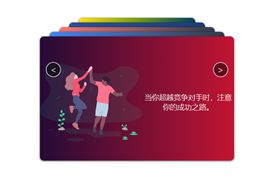
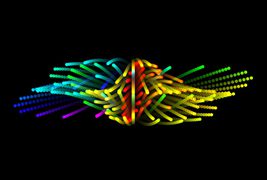
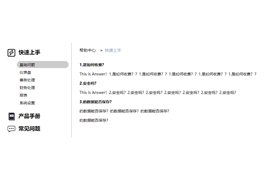
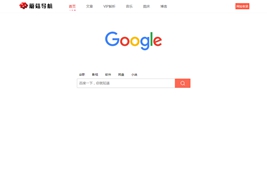

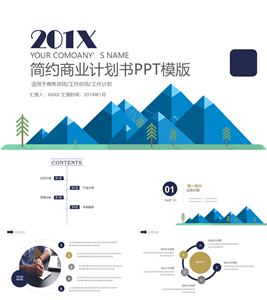

您还没有登录,请 登录 后发表评论!
提示:请勿发布广告垃圾评论,否则封号处理!!